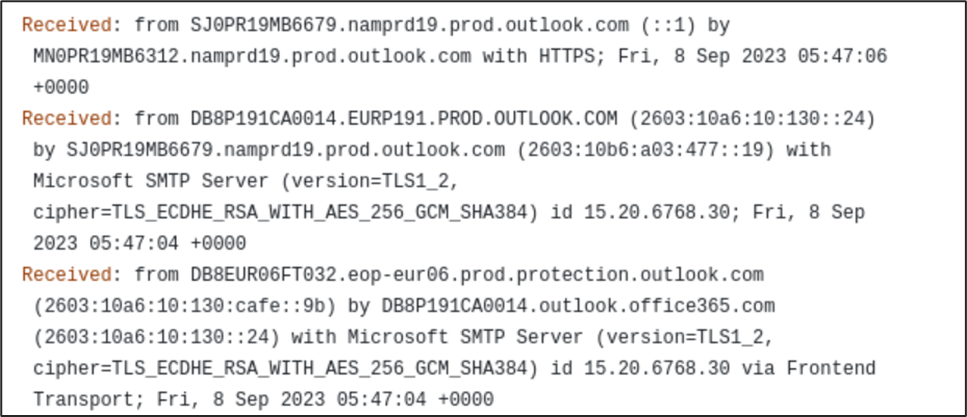- Anand R Menon
- Dec 22, 2024
- 7 min read

Security Operations Center(SOC) is one of the most crucial components in Cyberdefense for any new-age enterprises. No matter how many costly and popular cybersecurity tools have been purchased by companies, there's not much worth if there are no efforts towards centralized log collection and a SOC Team which can draw understanding from, and take actionable steps from the vast pool of collected logs from various log sources. But a question arises; can a SOC achieve it’s true potential without being updated on the latest cyberattacks and vulnerabilities?
Consider a situation where a SOC Team member is going through the logs from a particular log source and is coming across an attack pattern, for eg. multiple login failures from different geolocations seen in firewall logs. Seems to be a dictionary bruteforce attack on the firewall management interface. Also consider that subsequently, they're also going through a threat intelligence article which details an attack camapign which targets their firewall vendor's management interface via a critical vulnerability. The article also contains the malicious iocs and other details of the attackers, the details of the vulnerability which is targeted, the patch details for the vulnerability, and actionable steps to prevent a major incident in future. The SOC Team member is alarmed by the critical exposure of the firewall management interface to public and works closely with Firewall Team to limit public access via a VPN. They also make sure firewall has the latest patches. Additionally, they perform threat hunt for the malicious IoCs and block if any found within the company environment. They also create rules and dashboards to automate these detections in the future. This is where the power of Threat Intelligence comes in. While earlier it was just a bruteforce attack detected on firewall logs, with added threat intel coverage, its context expanded above and beyond and gave lots of actionable steps to the SOC Team to secure their enterprise.
What Really is Threat Intelligence?
So before going further, lets have some basic understanding about threat intelligence and its usecases.
In simple terms, threat intelligence is the art of knowing who your attackers or potential attackers are, and predicting their next move. Threat intelligence comes in various forms such as Tactical Threat Intelligence, Operational Threat Intelligence and Strategic Threat Intelligence. From a SOC perspective, more relevant are the former two, i.e Tactical(IoC-based) and Operational(TTP-based) Threat Intelligence. Since tactical threat intelligence is IoC-based(Indicators of Compromise), its more volatile. IPs, domains, file hashes etc. will keep on changing as the threat actor can easily do so in order to cover their tracks. So having the relevant and up-to-date information is very important in tactical threat intelligence. Nowadays, what many SOC teams are doing wrong is, overly relying on third-party TI feeds integration and thinking that that's enough to tick the TI box. The problem with this approach is that, many of the feeds ingested or iocs received might not be relevant to you and will only help to increase the overall log ingestion into your SIEM tool. It could be outdated data, for eg. a "malicious" IP which is 3 months old and which is no longer used by the attacker, or a domain which targets an entirely different country or industry from yours. These are irrelevant data for your organization. Operational Threat Intelligence relies on attacker TTPs(Tactics, Techniques & Procedures) which has more lifespan compared to IOCs. This is because TTPs are basically attacker behaviours which doesn’t change overnight. For eg. A threat actor using a specific phishing lure for initial access, using a specific C2 protocol for data exfiltration etc. The best practice for SOC teams is to use a combination of tactical and operational threat intelligence for maximum effectiveness.
Relevant Threat Intel
Threat Intelligence in its true form is always relevant and that's particularly so when some of the below conditions are met:
- Relevant to your industry: For eg. A specific rasomware targeting healthcare industry.
- Relevant to your region: Cybercrimes trageting your company's operational region.
- Technology-specific threats: Critical Vulnerabilities present or attacks targeting your technology stack, be it the operating system used, Windows or third-party applications deployed etc.
How to gather Threat Intelligence
The best thing to have is your own threat intelligence team which actively researches the open, deep and dark web for gathering data on critical threats. If your company doesn’t have that bandwidth, lots of proactive threat intel teams are present across the world which disseminate critical threat research data for free on a periodic basis. Some of the best threat intel teams in the industry are:
Each of these vendors are leaders in threat research and their articles go so much in-depth into the vulnerabilities, how they’re exploited, related iocs etc. If mapped rightly to the parameters for relevant threat intel which was discussed previously, these info can provide invaluable inputs to companies to improve their overall security posture.
How to Leverage Threat Intelligence in SOC Monitoring?
Even though threat intelligence is one of the most powerful assets for any blue team, its one of the most underutilized powers in many companies. Even to the extent that many cybersecurity companies simply see it as a marketing exercise which is limited to sending Weekly Threat Intel Newsletters to their existing/prospective clients. But here's a fundamental thought which might help reiterate the importance of threat intel. If not well-informed about the latest cyberattacks or vulnerabilities, how efficient will defenders be? Is the purpose of SOC just to check the compliance boxes and get drowned in redundant false positive alerts? If the answer is a big NO, let’s discuss some ways to effectively leverage the valuable information extracted from threat intelligence to empower the SOC operations.
Threat Hunting with IOCs
The easiest and the best way to start leveraging threat intelligence is performing a threat hunt with the IOCs collected from the threat intel. This is the tactical threat intel area which we previously discussed. In this stage, we check whether there were any connection attempts(allowed/blocked) from the malicious IPs towards our company environment, any malicious hashes(files) observed in the endpoint logs, malicious domain connections observed from any of the endpoints etc. If allowed connections are observed, further investigation is required including checking the bytes transferred, any return connections, file executions, file drops in unusual locations, further inbound/outbound connections targeting vulnerable ports etc. Remediation actions can start with blocking the malicious iocs and then taking further steps as required according to how the investigation unfolds.
Threat hunting focused on TTPs
Here, we leverage the Operational Threat Intelligence which was discussed earlier wherein we focus on the attacker's tactics, techniques and procedures(TTPs).
Consider a threat actor who uses a specific phishing lure, i.e Christmas themed giveaway emails(Initial Access). The email contains a Word file attachment which when opened contains Macros which need to be enabled to view content. Upon enabling macros, a powershell script gets downloaded and run. The PowerShell script checks user privileges(Discovery), disables the real-time protection in Windows Defender(Defense Evasion), attempts to download and install the WinSCP software(Execution), compresses and sends data to a remote server using WinSCP(Data Exfiltration). Many of these tactics/techniques are common across threat actors and can be spotted using threat hunting rules which contains command-line keywords from these activities.
For eg., disabling real time monitoring is performed using the following command in PowerShell:
Set-MpPreference -DisableRealtimeMonitoring $true
Such attempts can be spotted by searching for commandlines in Sysmon/EDR logs with the keyword "DisableRealtimeMonitoring"
Very obviously, such activity might overlap with valid admin activity which is why hunting and log analysis shouldn’t be limited to just a few commandlines or IP connections, but the search time should be broadened to analyse what happened before and after the suspicious activity. If it’s a case of compromised admin account, most probably you’ll see something unexpected/absurd happening unlike a normal admin account.
Detection Rules
Now consider we have performed the threat hunting based on relevant threat intel for our company and made sure that there's no imminent threat targeting our firm. But what if, something happens later when we're not performing hunting? What if the SOC Team has shifted its focus to another major threat actor which is targeting its geographical area and the previous threat actor takes advantage of this opportunity? So we need a means to automate the process of getting alerted when it matters, i.e we need Detection Rules. Detection rules can also be IoC-based or TTP-based. IoC-based rules might be helpful to detect a specific threat-actor presence in company environments but are often short-lived. TTP-based rules can prove helpful to detect different threat actors since as discussed earlier, many TA's share similar tactics/techniques.
Dashboards
Building dashboards to monitor attack trends is another helpful way to evaluate the overall security posture of your firm. Dashboards provide a bird's eye-view into those key metrics which helps both the SOC Team and the C-Level Executive Team alike. SOC Team gains visibility into critical vulnerabilities and threats looming over their enterprise, which can be further investigated in-depth via log analysis and threat hunting as well as can be automated using detection rules. CISO can take major strategic decisions based on the visible company exposure and by identifying areas which require higher cybersecurity investment.
Its high time to make a major shift from viewing threat intelligence as a fashionable, marketing term which is seldom used realistically in cyberdefense to being an essential powerhouse of a SOC Team. Relevant and actionable threat intel coupled with well-devised SOC processes will be a real force to be reckoned with! Its time to de-glamorize and expose the cybercrime space which is filled with crooks who rejoice on others’ miseries and thinks they can get away with it. Threat-intel powered SOC shows the way forward!!






























